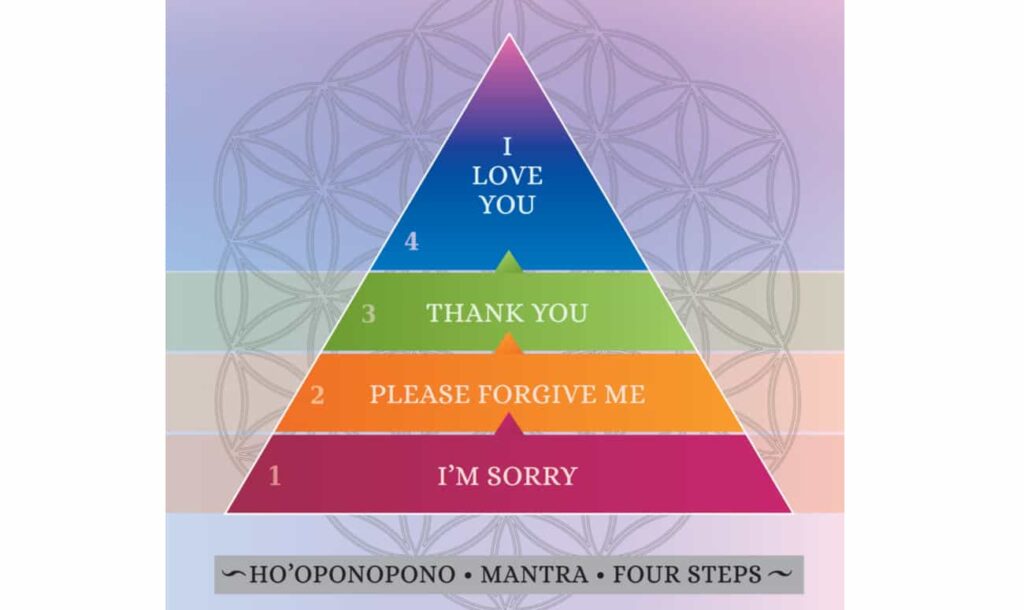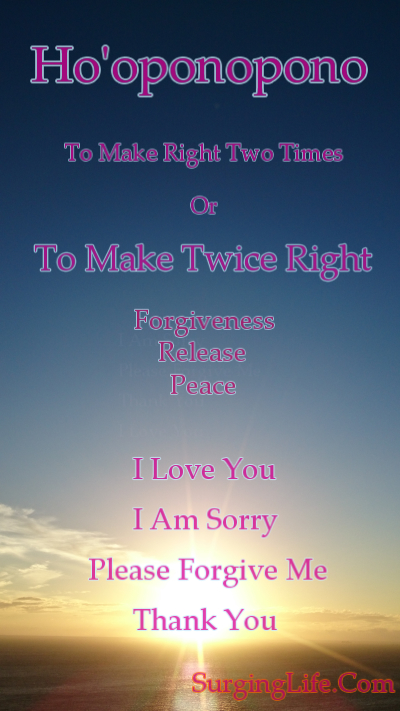In exploring the connection between Ho’oponopono and the practice of mindfulness, we uncover a remarkable merging of ancient wisdom and modern mindfulness techniques. Both practices fundamentally focus on self-awareness, healing, and cultivating peace within oneself, but how do they align? By delving into the core principles and techniques of Ho’oponopono and mindfulness, we uncover their shared emphasis on acceptance, forgiveness, and taking responsibility for one’s thoughts and actions. Through this exploration, we begin to see the powerful potential of combining these two transformative practices to enhance our personal growth and well-being.
Understanding Ho’oponopono
Origins of Ho’oponopono
Ho’oponopono is a traditional Hawaiian practice that has been handed down through generations. It originated from the ancient Polynesian settlers who arrived in Hawaii many centuries ago. In Hawaiian, “ho’o” means “to make” and “ponopono” means “right.” Therefore, the term “ho’oponopono” can be translated as “to make things right.”
Definition of Ho’oponopono
Ho’oponopono is a process of reconciliation, forgiveness, and healing that aims to restore harmony in relationships, both within oneself and with others. It is based on the belief that any disharmony or conflict arises from unresolved issues and emotions that need to be addressed and released. By taking responsibility for these issues and offering forgiveness, one can bring about a state of balance and peace.
Key Principles of Ho’oponopono
The practice of Ho’oponopono is built upon several key principles. Firstly, it acknowledges that every individual is responsible for their own experiences and the world they create. It emphasizes the concept of personal responsibility and empowers individuals to take ownership of their actions and emotions. Secondly, Ho’oponopono emphasizes the power of forgiveness and letting go of grievances. It encourages individuals to release negative emotions and cultivate compassion and forgiveness towards oneself and others. Finally, Ho’oponopono highlights the importance of interconnectedness and recognizes that healing and reconciliation extend beyond the individual to encompass the collective consciousness. It promotes the understanding that we are all interconnected and that healing one’s own wounds contributes to the healing of the whole.
Exploring Mindfulness
What is Mindfulness?
Mindfulness is the practice of bringing one’s attention to the present moment, with an attitude of non-judgmental awareness. It involves paying attention to one’s thoughts, feelings, and bodily sensations without getting caught up in them. Mindfulness encourages individuals to observe their experiences with curiosity and acceptance, fostering a greater sense of self-awareness and well-being.
Benefits of Practicing Mindfulness
The practice of mindfulness has been scientifically proven to offer a wide range of benefits. Research suggests that regular mindfulness practice can reduce stress and anxiety, improve cognitive functions, enhance emotional regulation, and promote overall well-being. It can also improve one’s ability to focus, increase resilience, and cultivate a greater sense of compassion and empathy towards oneself and others.
Components of Mindfulness
Mindfulness consists of various components that work together to cultivate a state of present moment awareness. These components include focused attention, open awareness, and an accepting attitude. Focused attention involves directing one’s attention to a specific object or sensation, such as the breath. Open awareness involves expanding one’s awareness to include all present-moment experiences without judgment. An accepting attitude involves observing one’s experiences without attempting to change or control them, but rather accepting them as they are.

Ho’oponopono and Mindfulness: Similarities
Focus on Present Moment
Both Ho’oponopono and mindfulness emphasize the importance of being fully present in the moment. They encourage individuals to let go of worries about the past or future and instead focus on the here and now. By grounding oneself in the present moment, one can cultivate a deeper awareness of one’s own thoughts, emotions, and physical sensations.
Non-Judgmental Awareness
Ho’oponopono and mindfulness share a common emphasis on non-judgmental awareness. They both encourage individuals to observe their thoughts, feelings, and experiences without labeling them as good or bad. By adopting a non-judgmental attitude, one can cultivate a sense of acceptance and compassion towards oneself and others.
Cultivating Compassion
Both practices promote the cultivation of compassion and forgiveness. Ho’oponopono encourages individuals to take responsibility for their actions and emotions, offer forgiveness, and release negative energies. Mindfulness fosters compassion by teaching individuals to observe their own suffering and the suffering of others with empathy and understanding. By cultivating compassion, individuals can enhance their own well-being and contribute to the well-being of others.
Integration of Body and Mind
Ho’oponopono and mindfulness recognize the integral connection between the mind and body. They acknowledge that one’s mental and emotional states can manifest in physical symptoms and well-being. By integrating body and mind, these practices offer holistic approaches to healing and well-being.
Invitation for Self-Reflection
Both Ho’oponopono and mindfulness invite individuals to engage in self-reflection. They encourage introspection and self-inquiry to explore one’s own thoughts, emotions, and beliefs. By reflecting on oneself, individuals can gain a deeper understanding of their inner experiences and uncover areas of growth and healing.
Ho’oponopono and Mindfulness: Differences
Cultural Origins
One key difference between Ho’oponopono and mindfulness lies in their cultural origins. Ho’oponopono stems from the ancient Hawaiian tradition and has deep cultural significance within the Hawaiian community. It is grounded in specific cultural beliefs and practices that may not fully translate to other cultural contexts. On the other hand, mindfulness is rooted in ancient Buddhist teachings and is often presented in a secular and accessible manner that can be practiced by individuals from various cultural backgrounds.
Religious or Spiritual Context
While mindfulness can be practiced in a secular manner, Ho’oponopono often has a religious or spiritual context. In Hawaiian culture, it is closely intertwined with spiritual beliefs and rituals that involve connecting with ancestors and spiritual deities. Mindfulness, on the other hand, focuses on cultivating present-moment awareness and does not necessarily involve any religious or spiritual beliefs.
Approach to Healing
Ho’oponopono and mindfulness have different approaches to healing. Ho’oponopono emphasizes the importance of reconciliation and forgiveness as essential components of healing. It encourages individuals to take responsibility for any disharmony or conflict and seeks to restore balance and harmony in relationships. Mindfulness, on the other hand, approaches healing through the cultivation of present-moment awareness and acceptance of one’s experiences. It does not explicitly focus on reconciliation or forgiveness as a primary means of healing.
Beliefs about the Self
Another difference between Ho’oponopono and mindfulness lies in their beliefs about the self. Ho’oponopono views individuals as responsible for their experiences and the state of the world around them. It emphasizes the need for taking personal responsibility and acknowledging one’s role in creating reality. Mindfulness, on the other hand, emphasizes the impermanence and interconnectedness of all things. It focuses on observing the ever-changing nature of the self and cultivating a sense of non-attachment to personal identity.
Concept of Responsibility
While both practices acknowledge the importance of taking responsibility, they approach the concept in different ways. Ho’oponopono places a strong emphasis on individual responsibility for healing and reconciliation. It encourages individuals to actively engage in the process of forgiveness and release. Mindfulness, on the other hand, emphasizes the concept of shared responsibility and interdependence. It encourages individuals to cultivate awareness of their interconnectedness with others and take responsibility for their actions in a broader social and environmental context.

Combining Ho’oponopono and Mindfulness
Integration of Practices
Combining Ho’oponopono and mindfulness can offer a synergistic approach to healing and personal growth. The practices can be integrated by incorporating mindfulness techniques into the Ho’oponopono process or using Ho’oponopono principles while practicing mindfulness. This integration can deepen self-awareness, enhance emotional healing, and promote overall well-being.
Applying Mindfulness in Ho’oponopono
One way to integrate mindfulness into the Ho’oponopono practice is by bringing mindful awareness to the process of reconciliation and forgiveness. By cultivating present-moment awareness, individuals can observe their thoughts, emotions, and bodily sensations as they engage in the Ho’oponopono process. This mindful approach can enhance clarity and insight, allowing for a deeper understanding of the root causes of disharmony and facilitating the release of negative energies.
Using Ho’oponopono Principles in Mindfulness
Conversely, Ho’oponopono principles can be incorporated into mindfulness practice by bringing forth a sense of compassion and forgiveness towards oneself and others. When engaging in mindfulness, individuals can cultivate self-compassion and extend that compassion to others as they observe their own suffering and the suffering of others. By integrating Ho’oponopono principles, mindfulness practice can become a transformative tool for healing and reconciliation.
Enhancing Well-Being
The combination of Ho’oponopono and mindfulness can enhance overall well-being on multiple levels. By integrating practices, individuals can deepen their self-awareness, heal emotional wounds, reduce stress and anxiety, improve relationships, and cultivate compassion and forgiveness. This integrative approach offers a holistic and synergistic path for personal growth and transformation.
Benefits of Aligning Ho’oponopono and Mindfulness
Deeper Self-Awareness
Aligning Ho’oponopono and mindfulness can lead to a deeper sense of self-awareness. By cultivating present-moment awareness and engaging in inner reflection, individuals can gain insight into their own thoughts, emotions, and patterns of behavior. This heightened self-awareness allows for a more conscious understanding of oneself and the underlying causes of disharmony.
Emotional Healing
The combination of Ho’oponopono and mindfulness provides a powerful framework for emotional healing. By acknowledging and taking responsibility for one’s emotions, individuals can release deeply-held grievances and experience emotional liberation. Mindfulness practice supports this process by allowing individuals to observe their emotions without judgment, creating space for healing and transformation.
Reduction of Stress and Anxiety
Both Ho’oponopono and mindfulness have been found to reduce stress and anxiety. By adopting a mindful approach to the Ho’oponopono process, individuals can cultivate a calmer and more peaceful state of mind. The practice of present-moment awareness and non-judgmental observation can alleviate stress and anxiety by redirecting attention away from worries about the past or future.
Improvement in Relationships
Aligning Ho’oponopono and mindfulness can lead to significant improvements in relationships. Both practices emphasize reconciliation, forgiveness, and the cultivation of compassion. By applying these principles, individuals can foster healthier and more harmonious relationships with others. The practice of Ho’oponopono and mindfulness can enhance communication, empathy, and understanding.
Increased Compassion and Forgiveness
The combination of Ho’oponopono and mindfulness can enhance the cultivation of compassion and forgiveness. By integrating mindfulness techniques into the Ho’oponopono process, individuals can observe their own suffering and the suffering of others with empathy and understanding. This increased compassion and forgiveness can lead to a more compassionate and forgiving outlook on life.

Practical Tips for Integrating Ho’oponopono and Mindfulness
Start with Mindful Breathing
A simple way to integrate Ho’oponopono and mindfulness is to begin with mindful breathing. Take a few minutes each day to focus on your breath, observing the sensation of each inhale and exhale. This mindful breathing exercise can help to calm the mind, center your attention, and cultivate present-moment awareness.
Incorporate Ho’oponopono Mantras
Another way to integrate practices is to incorporate Ho’oponopono mantras into mindfulness practice. Repeat phrases such as “I love you,” “I’m sorry,” “Please forgive me,” and “Thank you” as you engage in mindful meditation. This repetition of mantras can deepen the sense of compassion and forgiveness towards oneself and others.
Practice Mindful Eating
You can also integrate Ho’oponopono and mindfulness by practicing mindful eating. Take the time to savor each bite of your meals, noticing the flavors, textures, and sensations in your mouth. By bringing mindful awareness to the act of eating, you can cultivate a deeper appreciation for food and nourish your body and mind.
Utilize Ho’oponopono Cleaning Tools
Ho’oponopono cleaning tools, such as the phrases “I’m sorry,” “Please forgive me,” “Thank you,” and “I love you,” can be used as anchors during mindfulness practice. Whenever you notice your mind wandering or getting caught up in thoughts, gently repeat these phrases to yourself, allowing them to bring you back to the present moment.
Engage in Regular Self-Reflection
To fully integrate Ho’oponopono and mindfulness, engage in regular self-reflection. Set aside dedicated time to journal, meditate, or engage in other self-reflective practices. Use this time to explore your thoughts, emotions, and beliefs, and apply the principles of Ho’oponopono and mindfulness to foster personal growth and transformation.
Case Studies: Experiences of Combining Ho’oponopono and Mindfulness
Personal Testimony 1
One individual reported that integrating Ho’oponopono and mindfulness had a significant impact on their emotional well-being. They found that practicing mindfulness while engaging in Ho’oponopono allowed them to observe their emotions without judgment and release deeply-held grievances. This integration led to a greater sense of self-compassion, forgiveness, and overall emotional healing.
Personal Testimony 2
Another individual shared how combining Ho’oponopono and mindfulness enhanced their relationships with others. By practicing mindfulness, they were able to cultivate a deeper sense of empathy and understanding towards others. The principles of Ho’oponopono, such as forgiveness and reconciliation, were seamlessly integrated into their mindful interactions, resulting in improved communication and stronger connections with loved ones.
Personal Testimony 3
One person described their experience of integrating Ho’oponopono and mindfulness as a transformative journey of self-discovery. By applying mindfulness techniques during the Ho’oponopono process, they were able to gain insight into their own patterns of behavior and thought. This self-awareness allowed them to take responsibility for their actions and emotions, leading to personal growth and an increased sense of overall well-being.

Critiques and Controversies
Cultural Appropriation
One critique of the integration of Ho’oponopono and mindfulness is the concern of cultural appropriation. Ho’oponopono has deeply cultural roots within the Hawaiian tradition, and there is a risk of diluting or appropriating its practices when combined with mindfulness. It is crucial to approach the integration with respect, mindfulness, and a willingness to learn and understand the cultural context in which Ho’oponopono originated.
Scientific Validity
Some critics argue that the practices of Ho’oponopono and mindfulness lack scientific evidence to support their claims. They suggest that the perceived benefits of these practices may be attributed to a placebo effect or subjective experiences. However, numerous scientific studies have demonstrated the positive effects of mindfulness on mental and emotional well-being, offering a scientific basis for its integration with Ho’oponopono.
Ethical Concerns
When integrating Ho’oponopono and mindfulness, ethical concerns may arise, particularly around the concepts of forgiveness and responsibility. It is important to recognize that forgiveness should not be forced or rushed, as it can undermine the process of healing. Each individual’s experience and journey towards forgiveness and reconciliation may be unique, and it is essential to approach these concepts with sensitivity and respect for personal boundaries.
Misinterpretations and Simplifications
Another critique is the potential for misinterpretations and simplifications when integrating Ho’oponopono and mindfulness. The practices have deep cultural and historical contexts that can be overlooked or oversimplified in the process of integration. It is important to approach the integration with an open and informed mindset, seeking to understand the nuances and complexities of both practices.
Conclusion
In conclusion, the integration of Ho’oponopono and mindfulness offers a valuable opportunity for personal growth, healing, and transformation. While they have their similarities and differences, when combined, they create a synergistic approach that fosters deeper self-awareness, emotional healing, and increased compassion. By integrating practices and principles, individuals can cultivate a profound sense of well-being and contribute to the healing of themselves and the world around them.

